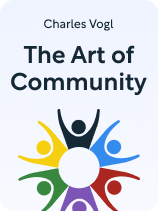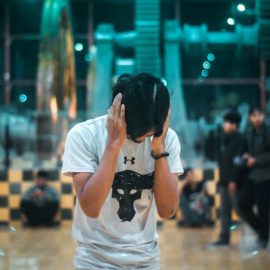

This article is an excerpt from the Shortform book guide to "The Art of Community" by Charles Vogl. Shortform has the world's best summaries and analyses of books you should be reading.
Like this article? Sign up for a free trial here.
What’s community lore? What are the three types of lore that community members can share with one another?
Lore is a collection of traditions and knowledge that are typically passed through stories. Sharing community lore can enhance the connection between members of a community by helping them understand each other and their morals better.
Learn more about the types of lore your community can share.
Sharing Community Lore
Typically, lore is shared via in-person conversations, but online communities can enable lore-sharing by giving members an opportunity to speak with each other virtually through text or video.
(Shortform note: According to neuroscientists, sharing lore doesn’t just help you connect with others on a mental or emotional level—the connection also happens on a physical level. Studies suggest that when you listen to a compelling story, your brainwaves synchronize with those of the storyteller; this means your brain acts as if you were truly inside the narrative, which helps you understand the story on a deeper level. Similar brain activity occurs when you read others’ stories, which suggests that sharing community lore online in the form of text may be just as effective as in-person storytelling.)
Vogl says there are three types of lore:
Autobiographical lore (which Vogl calls personal stories) includes stories shared by individual members of the community about their own lives. Vogl explains that autobiographical lore is valuable because when members share their life stories, they get to know each other on a deeper level and develop more respect for each other’s tenacity in overcoming their individual struggles. Sharing autobiographical lore also builds trust and a sense of belonging within the community.
(Shortform note: Experts offer suggestions for creating a space in your community where members can share autobiographical lore. First, you have to provide an appropriate forum—these include events that are explicitly focused on group storytelling, like roundtables and other kinds of discussion sessions. Then, create a safe space by encouraging members to listen attentively, validate each other’s stories, and express gratitude to each other for their willingness to share.)
Foundational lore explains how the community came into existence and reveals the community’s moral code. Vogl says that foundational lore has three elements—it explains how members discovered something meaningful, accomplished something novel because of that discovery, and welcomed others to participate in perpetuating that process with them. Foundational lore should be accurate, but it doesn’t have to be literal—for example, religions often make use of foundational lore that’s best understood metaphorically, like creation stories.
(Shortform note: In Built to Last, Jim Collins explains that visionary companies—that is, the most long-lasting and successful companies—use foundational lore to create a corporate community that helps them achieve that success. Collins says that visionary companies indoctrinate their employees with company-specific foundational lore as soon as they’re hired, just as a cult indoctrinates its new members with its beliefs. This process helps employees buy into the company’s core philosophy and embody its values. This then leads to greater synergy, which helps companies achieve their goals. Foundational lore might similarly foster solidarity among members of non-corporate communities, too.)
Moral lore, according to Vogl, recounts examples of when a community came together to put their moral code into practice. For example, if a community believes in making sure all members have their financial needs met, members might share moral lore about a time when they pulled together the funds an individual needed to pay their bills. Vogl says that moral lore serves as proof that the community practices what it preaches and makes a meaningful difference in members’ lives.
(Shortform note: In addition to proving that the community practices what it preaches, moral lore can be a useful teaching tool to instruct new members about the community’s values. According to experts, stories make learning easier (as opposed to simply sharing a list of facts, for example) for a couple of reasons: First, lore is engaging—you’re more likely to get wrapped up in a story than in a list of community rules. Because of this, you’re more likely to remember what you learned from the story than you are to remember what you learned from a list. Second, the process of sharing lore is suitable for various learning styles. For example, if you’re a kinesthetic learner, you’ll pick up on and remember how the lore makes you feel internally.)
Vogl also explains that it’s beneficial for communities to be vulnerable when they share lore. Based on psychologist Brené Brown’s work, Vogl defines vulnerability as a sense of emotional riskiness that occurs when someone might disapprove of what you say. He says that vulnerability strengthens community bonds because when you’re honest about your shortcomings and struggles instead of trying to maintain an image of perfection, it builds trust.
(Shortform note: In The Power of Vulnerability, Brené Brown explains that feelings of shame can impede your ability to be vulnerable with others. If you struggle to share vulnerable stories with other members of your community, you might try some of Brown’s tips for moving past shame-based barriers. These include decoupling your self-worth from your mistakes, naming shame when you feel it, accepting that you can’t control others’ expectations of you or reactions to your story, and tapping your forehead when you notice that you’re spiraling into a state of deep shame—this helps you activate your capacity for reason, de-intensifying your emotions.)

———End of Preview———
Like what you just read? Read the rest of the world's best book summary and analysis of Charles Vogl's "The Art of Community" at Shortform.
Here's what you'll find in our full The Art of Community summary:
- The fundamental guidelines all communities should follow
- How to institute a community meeting place and set of customs
- How you can enhance belonging within your community






